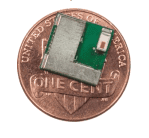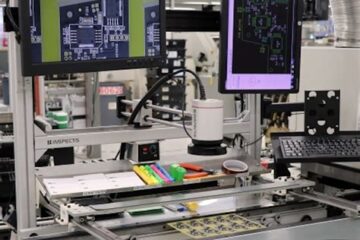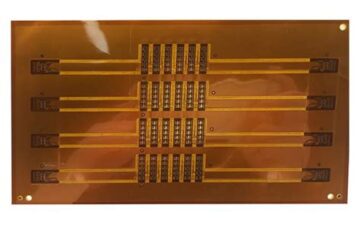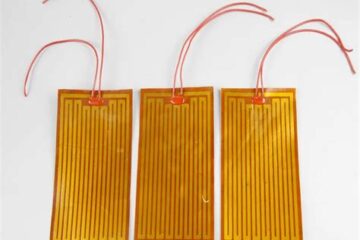Introduction
Getting prototype printed circuit boards (PCBs) manufactured quickly is crucial when developing new electronic products. The faster you can iterate on your design, test it, and make improvements, the faster you can bring an innovative product to market. For hardware startups and engineers, finding a PCB assembly service that provides fast turnaround on low-volume orders is essential.
This guide will examine how to get prototype and low-volume PCB production turned around rapidly. We’ll cover:
- The benefits of quick-turn PCB assembly
- What to look for in a fast turnaround PCB manufacturer
- PCB production steps that impact turnaround time
- Cost vs speed tradeoffs
- How to get your Gerber files ready for quick-turn fabrication
- Testing considerations for rapid prototyping
- Strategies for expedited PCB assembly
With the right PCB manufacturer and preparation on your end, you can have high-quality prototype boards shipped in as little as 24 hours. Let’s look at how it’s done.
Benefits of Fast Turnaround PCB Prototyping
Getting PCB prototypes produced and shipped quickly offers a number of advantages:
- Faster design validation: You can test your design and firmware much sooner.
- Rapid iteration: Quickly make any required hardware changes and test again.
- Earlier software development: Software and firmware engineers can start integration and testing.
- Accelerated time-to-market: Your product gets to customers faster.
- Quicker funding: For startups, prototypes help secure funding faster.
Rapid prototyping allows you to validate your design and make improvements much faster. And for companies racing to bring innovative products to market, quick-turn PCB assembly is invaluable.
Choosing a Quick-Turn PCB Manufacturer

To get fast turnaround on PCB prototypes and low-volume production, you need to choose the right fabrication partner. Here are key factors to look for:
Specialization in quick-turn services – Some PCB manufacturers focus specifically on providing fast turnaround for prototyping needs. They optimize their processes for speed.
Location – Favor manufacturers with production facilities closest to you to minimize shipping time and costs. For especially urgent orders, look for vendors located in your own country.
Order size flexibility – The vendor should be able to accommodate small-batch orders of just a few boards.
Fabrication technology – Look for manufacturers using advanced fabrication equipment and processes. This enables faster processing compared to older tools.
Supply chain management – Vendors should have relationships with component suppliers for prompt procurement.
Responsiveness – The provider should respond quickly to inquiries and be easy to communicate with.
Reputation – Check reviews and talk to others who have used the company. Quality and speed reputation are especially important.
When researching PCB manufacturers, look for those emphasizing fast turnarounds for low-volume or prototyping services. Their processes will be optimized for speed.
PCB Production Steps Impacting Turnaround Time
To understand how to get your PCBs faster, it helps to know a bit about the typical fabrication process flow and steps that affect turnaround time:
1. Submit Gerber files and order – Getting your Gerber files ready beforehand avoids delays. Use DFM guidelines to ensure manufacturability.
2. Documentation and engineering review – The vendor will do a design review, but simple designs simplify this process.
3. Procuring components – Using common parts that the manufacturer has on hand accelerates this step.
4. PCB fabrication – Advanced equipment and lean processes allow faster fabrication.
5. Solder paste stencil creation – Again, an optimized process minimizes time here.
6. Pick and place – Having standard components speeds this automated assembly.
7. Solder reflow – Efficient soldering techniques reduce time in this step.
8. Testing – While testing is essential, optimized processes prevent delays.
9. Shipping – Using a manufacturer close to you avoids long transit times.
10. Delivery – From order to delivery, look for 1-5 days for the fastest turnarounds.
For rapid turnarounds, look for manufacturers that have optimized every stage for speed.
Cost vs Turnaround Time
Generally, the faster the turnaround time, the higher the costs. Here are some of the tradeoffs between low cost and fast delivery:
| Factor | Lower Cost Impact | Faster Delivery Impact |
|---|---|---|
| Location | Asia manufacturers | Domestic manufacturers |
| Order Volume | Higher quantities | Lower quantities |
| Fab Process | Standard | Advanced equipment |
| Testing | Functional only | Full ICT, flying probe |
| Documentation | Standard | Simple designs |
| Shipping | Standard | Express, air freight |
To get affordable quick-turn orders, look for manufacturers in your region that specialize in fast delivery of lower quantities. Their processes will be set up for fast turnaround at reasonable costs.
Preparing Your Design Files for Rapid Turnaround

You can avoid delays on your end by having your Gerber files ready before ordering. Here are some tips:
- Review DFM guidelines – Follow PCB design for manufacturability rules to avoid problems.
- Use the right file formats – Provide standard Gerber files along with drill files, netlist, and readme file.
- Include all layers – Make sure your Gerber set includes copper layers, solder mask, silkscreen, etc.
- Design simple boards – Avoid dense, complex boards with tight tolerances. Simple=fast.
- Use common components – Sticking to common parts in standard packages prevents procurement slowdowns.
- Assign reference designators – Make sure all components are clearly labeled for assembly preparation.
- Provide complete documentation – Thoroughly document your design to speed up the review process.
The cleaner your design files and documentation, the faster your PCBs can be fabricated without back-and-forth or delays.
Testing Considerations for PCB Prototypes
Working with your PCB assembly provider, determine the right level of testing based on your prototyping objectives:
| Testing Type | Time Impact | Objective |
|---|---|---|
| No testing | Fastest | Form and fit checking |
| Flying probe test | Fast | Power on validation and basic function test |
| ICT test | Moderate time | Thorough validation of all nets |
| Functional test | Slowest | Validate performance meets all requirements |
For initial form and fit prototypes, basic functionality testing may be sufficient. As you refine your design, you may want more comprehensive testing. Your vendor can help guide you on the right testing to meet your prototyping goals within your desired timeline.
Strategies for Expedited PCB Fabrication and Assembly
To get your prototype boards produced in the shortest time frame possible, here are some strategies to consider:
- Fabricate domestically – Use a manufacturer located in your own country to avoid lengthy shipping.
- Pay extra for expedited handling – Many PCB vendors offer priority fabrication and shipping for an additional fee.
- Supply your own components – This avoids procurement time, but increases your costs.
- Use manufacturer’s standard parts – Let your vendor select in-stock components to prevent component delays.
- Eliminate through hole components – Only use surface mount devices for faster assembly.
- Limit your BOM – Reduce your bill of materials to the smallest set of essential components.
- Design for automated assembly – Avoid challenging placements and odd part orientations.
- Keep board geometry simple – Avoid internal cutouts and intricate board shapes when possible.
- Clearly mark your order “PROTOTYPE” – This prioritizes your board through manufacturing and shipment.
Discuss these options with your PCB assembly provider to develop the optimal plan for your rapid prototyping needs, balancing speed and costs.
Conclusion
Getting PCB prototype boards produced quickly enables faster debugging, testing, and design optimization. For companies rushing innovative products to market, fast-turn fabrication and assembly are indispensable. By partnering with an experienced quick-turn PCB production vendor and preparing your design files properly, you can have quality boards shipped in as little as 24 hours. Use the guidelines in this article to set up a rapid prototyping process that fits your budget and accelerates your development schedule.
FAQ
What is considered a fast PCB turnaround time?
For PCB prototypes, 1-3 days from order to delivery is considered very fast delivery. 3-5 days turnaround is still good for quick-turn needs. And 5-10 days would be standard turnaround.
How much more does expedited PCB delivery cost?
Depending on the manufacturer, expedited handling fees typically range from about 25% – 100% more than standard pricing. It’s a premium cost for ultra-fast turnaround.
Should I use a local or offshore PCB manufacturer for rapid prototyping?
For the absolute fastest turnarounds, a PCB manufacturer located domestically in your own country is generally best to avoid shipping time. However, many offshore manufacturers can deliver boards rapidly if they focus on fast-turn services.
What is the minimum order quantity for quick-turn prototype boards?
Most PCB assembly providers catering to prototyping can accommodate orders of just 1-10 boards for fast production. Lower quantities often have higher per-board prices.
Should I use SMT or through-hole components for rapid PCB assembly?
Surface mount technology (SMT) components allow for faster automated PCB assembly in general. Limiting or eliminating through hole parts speeds up fabrication. Discuss options with your vendor.



0 Comments